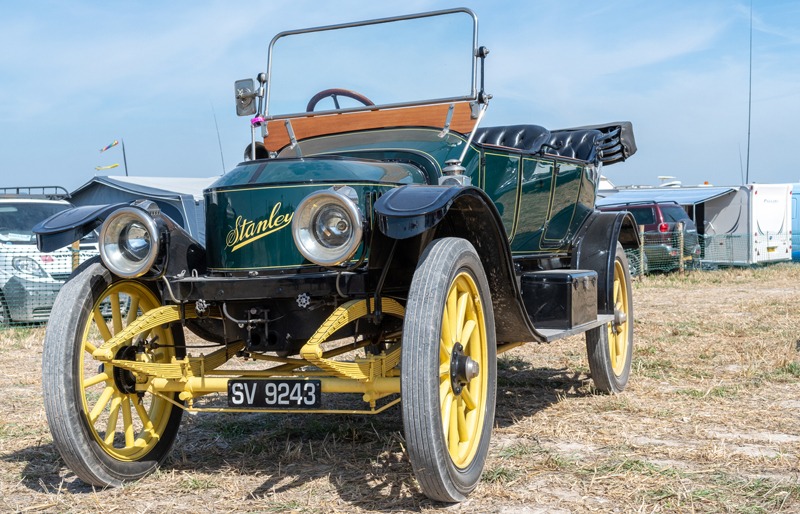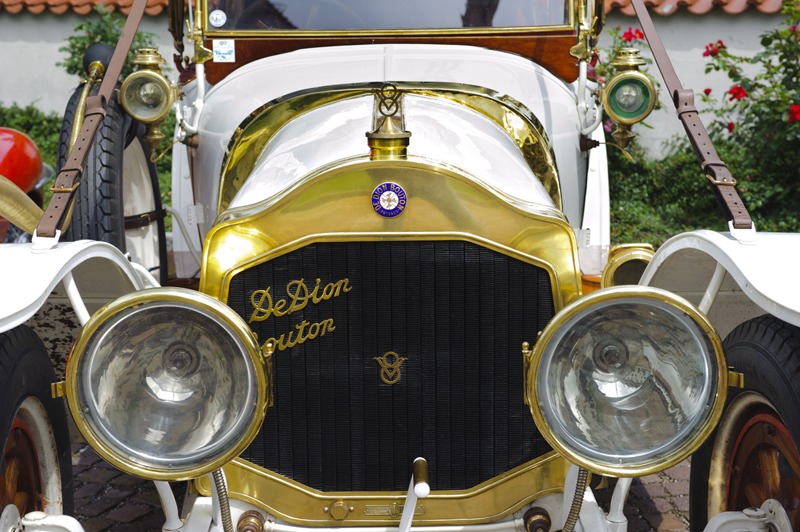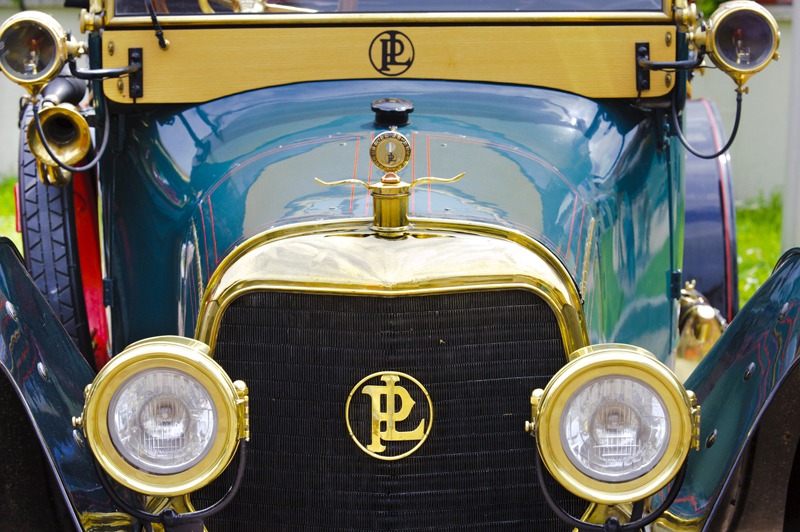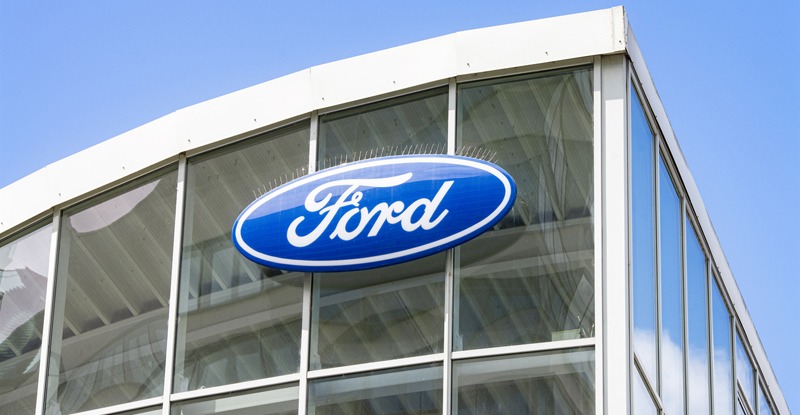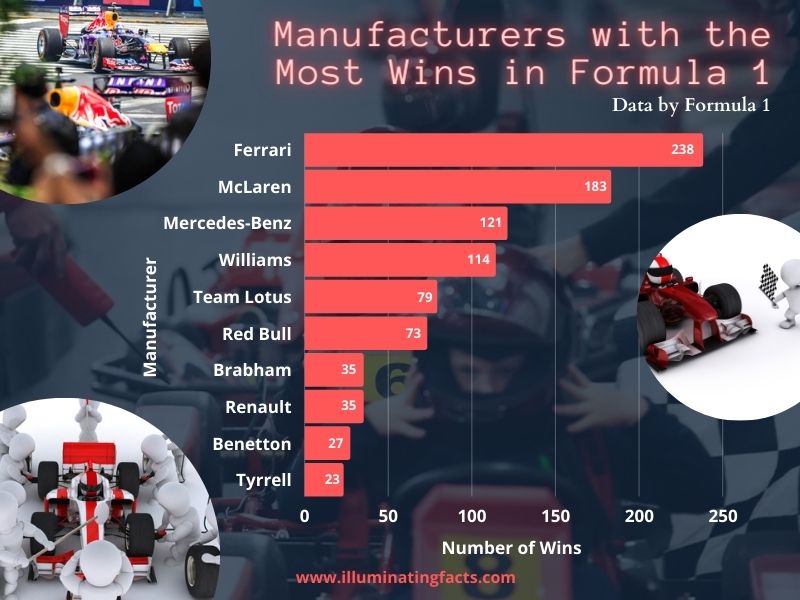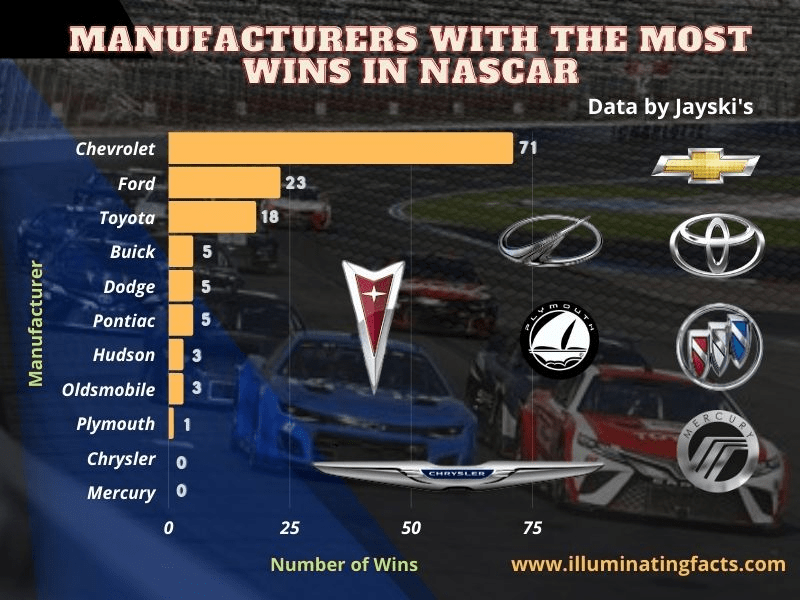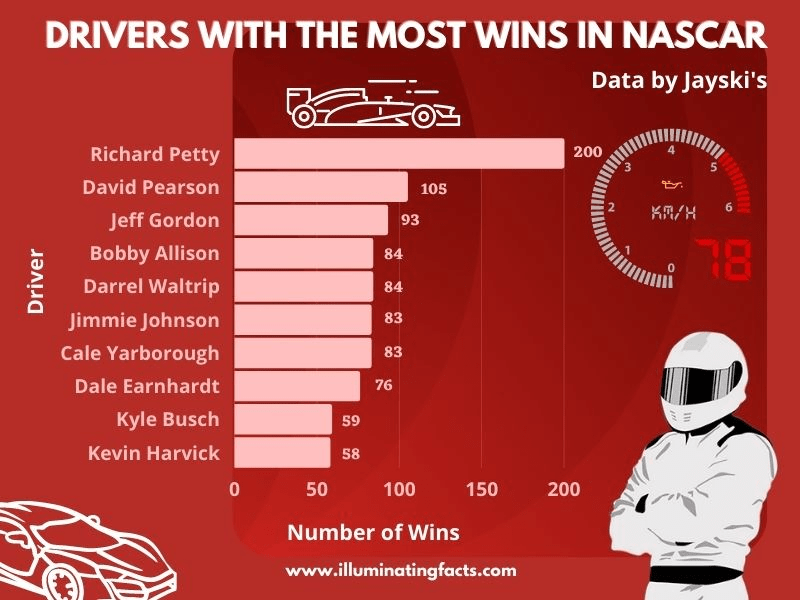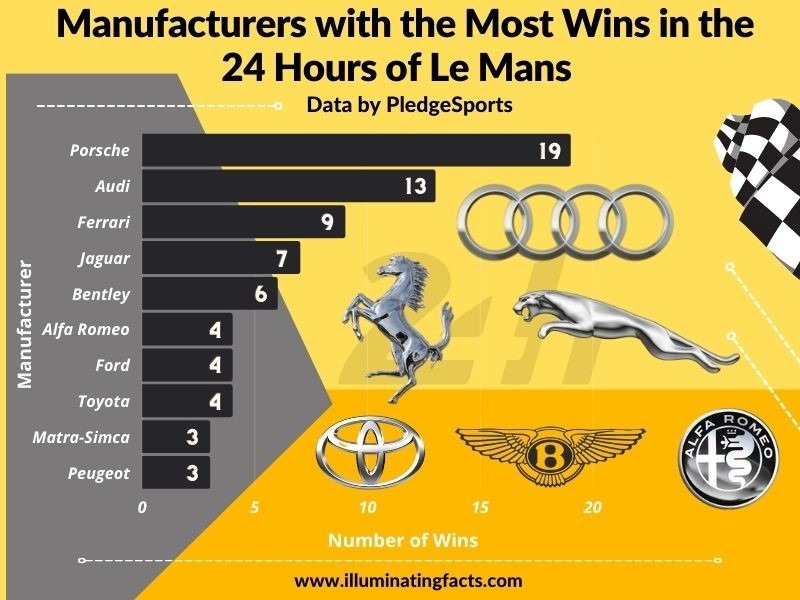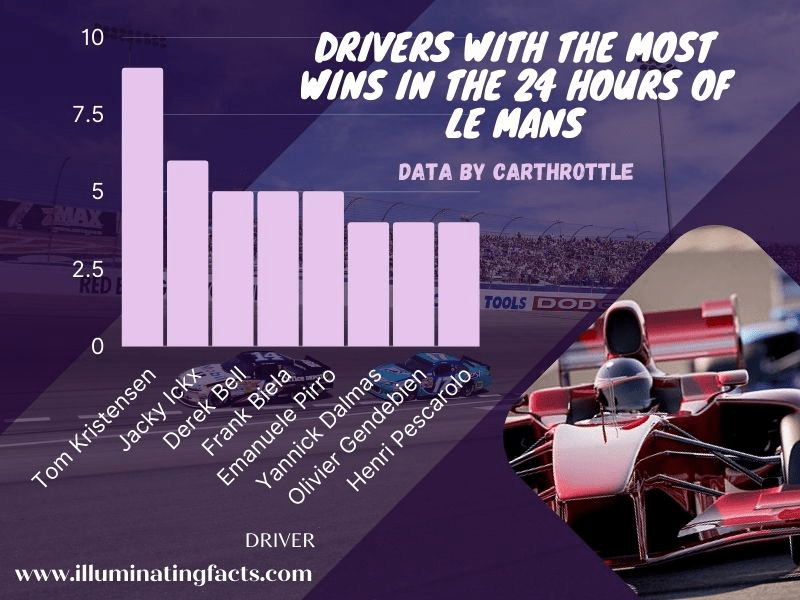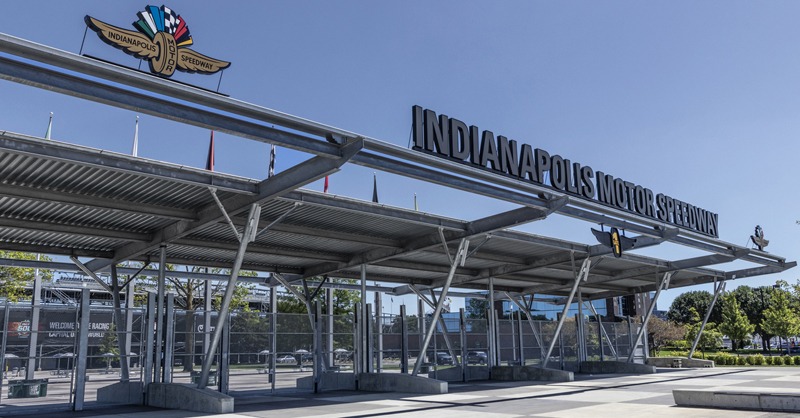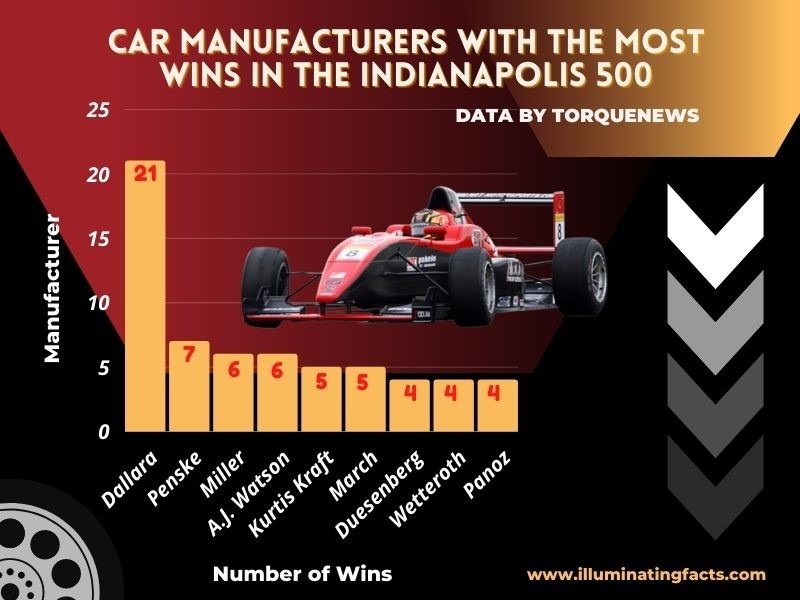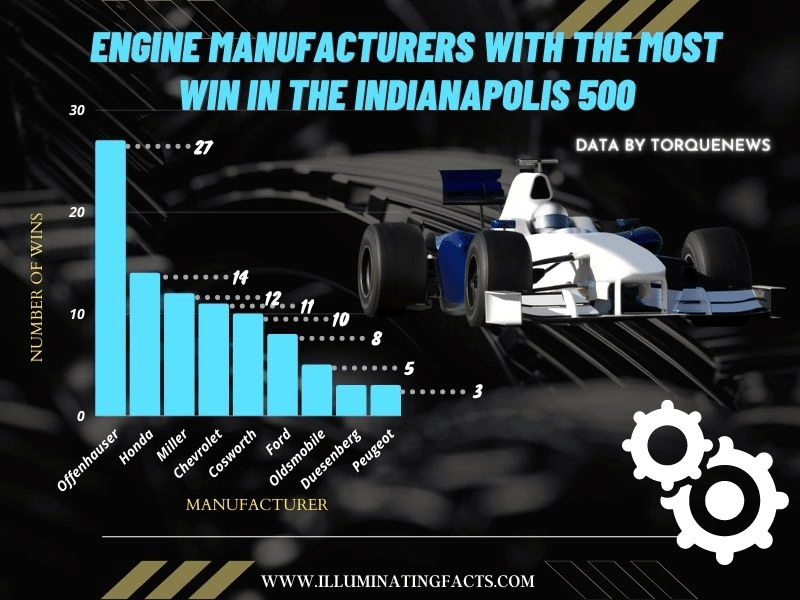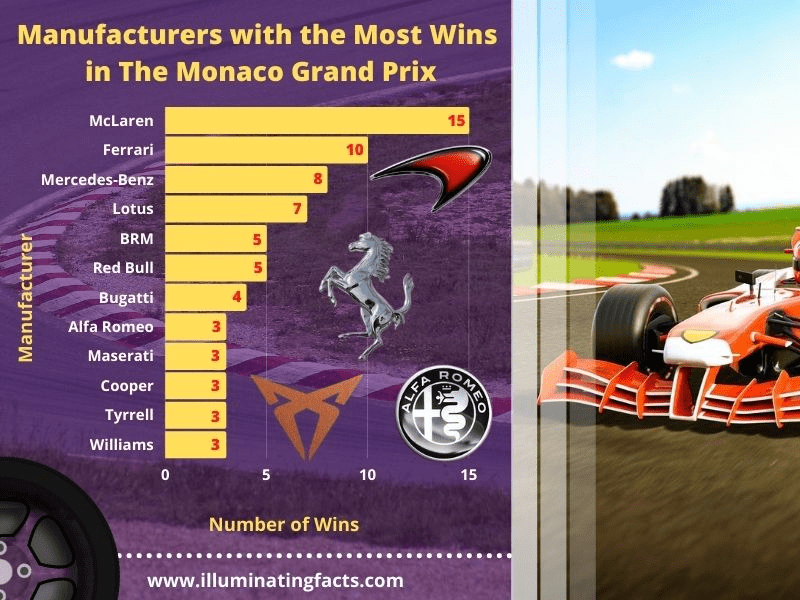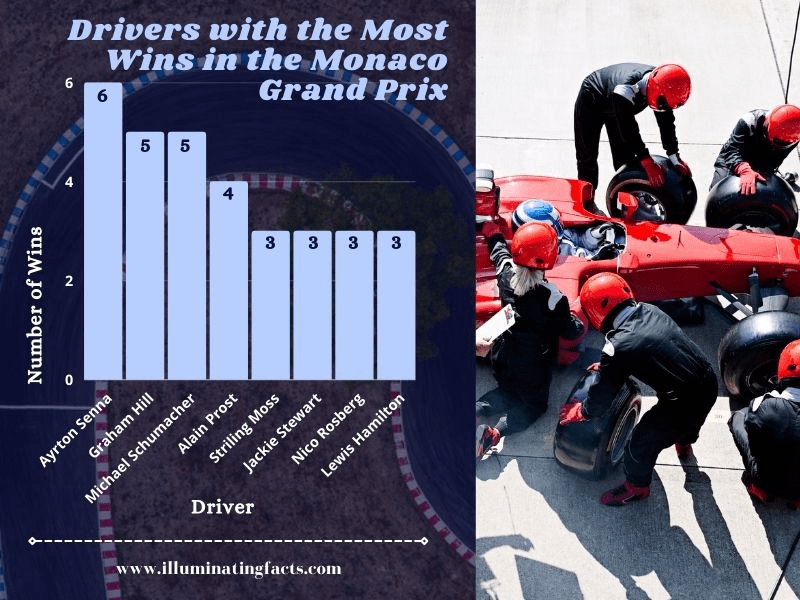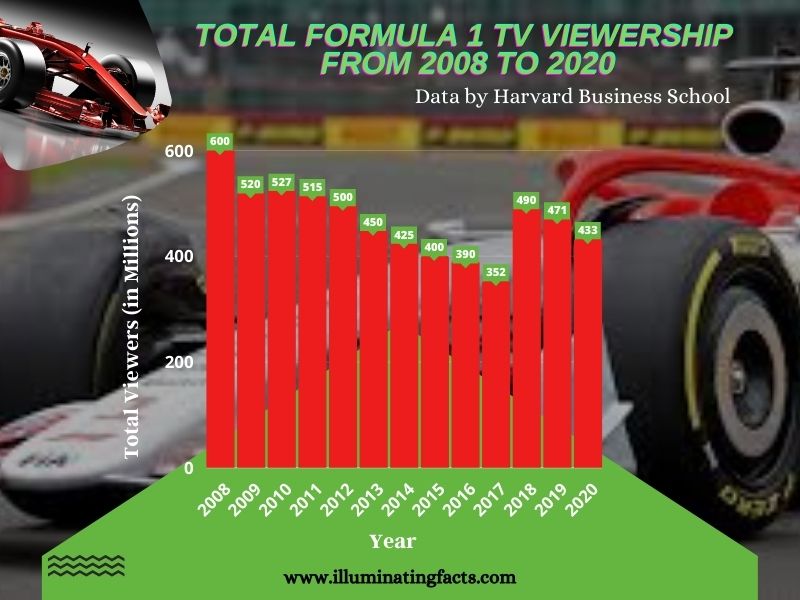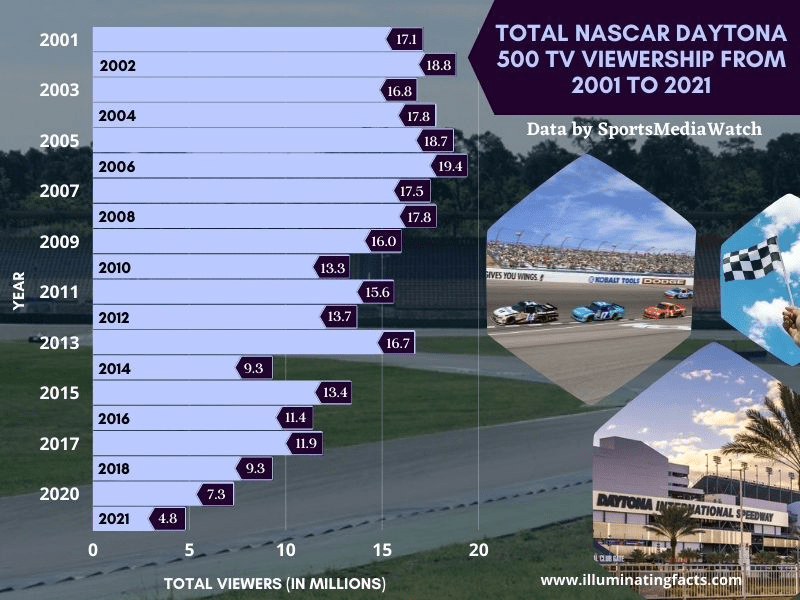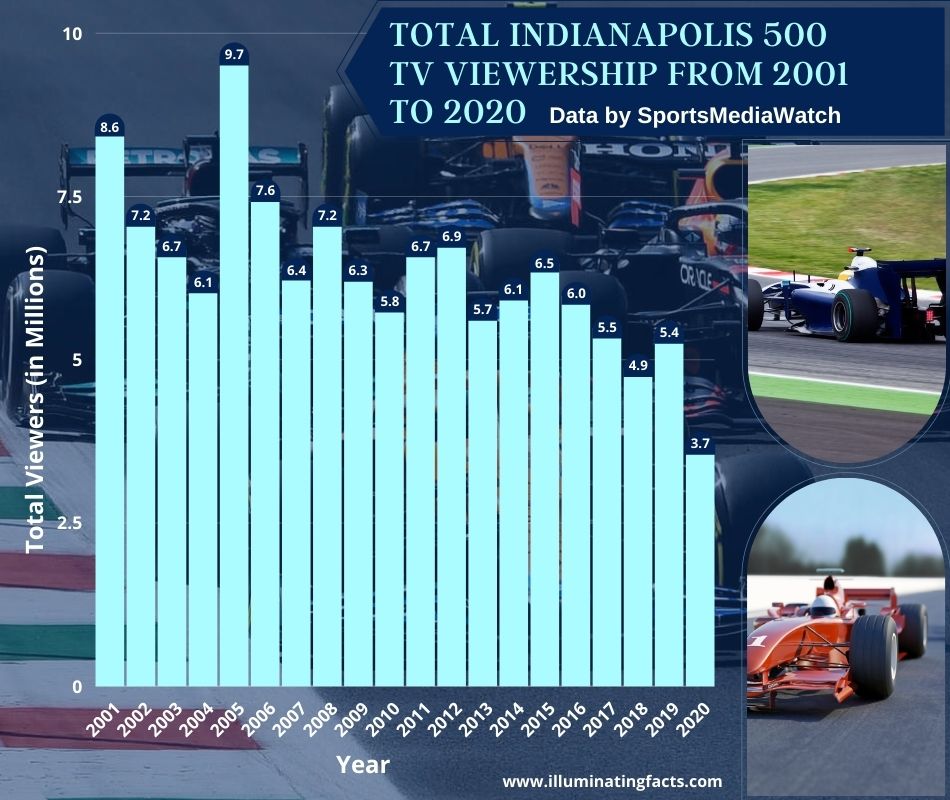Table of Contents
Background
Auto racing is considered one of the most exciting sports in the world. In addition, it is also the most challenging and dangerous, as one crucial mistake can lead to accidents and fatalities. Despite the number of accidents that occurred on the race tracks, auto racing remains one of the most-watched sports on television and in venues. In this article, we’ll discuss what made auto racing so interesting by showing its history and some facts about the most popular races in the industry.
History of Auto Racing
Auto racing can be traced back just several years before the founding of large-scale manufacturers of steam cars like Olds (Oldsmobile) in 1886, Serpollet in 1887, and Peugeot in 1889. While there may have already been races organized by the elites who were able to design, develop, and buy their own cars during the mid-1800s, the first-ever recorded race occurred on August 30, 1867, and it was a race between the steam carriage of British engineer Isaac Watt Boulton (founder of locomotive-hire business Boulton’s Siding) and Daniel Adamson, another British engineer who founded the Daniel Adamson and Co. ironworks. [1]
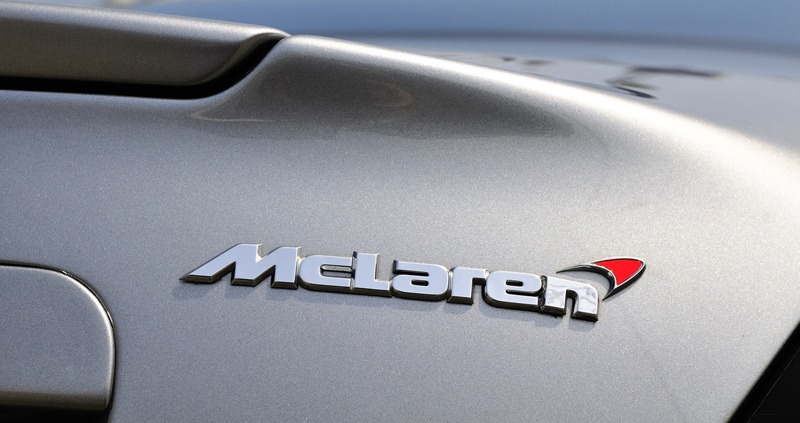
McLaren logo
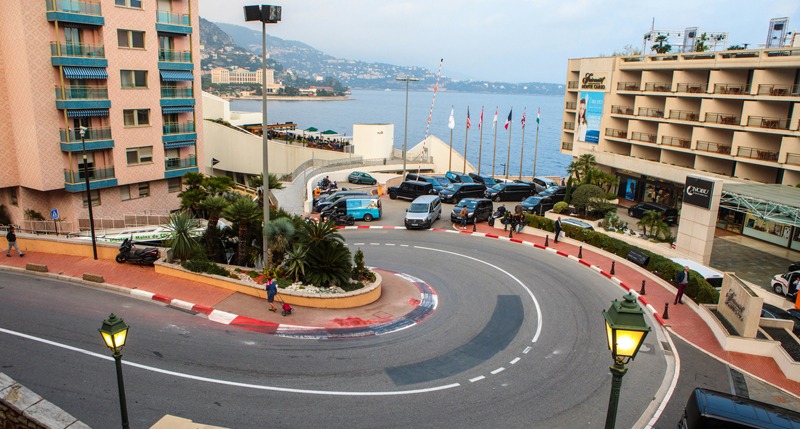
a section of the Circuit de Monaco
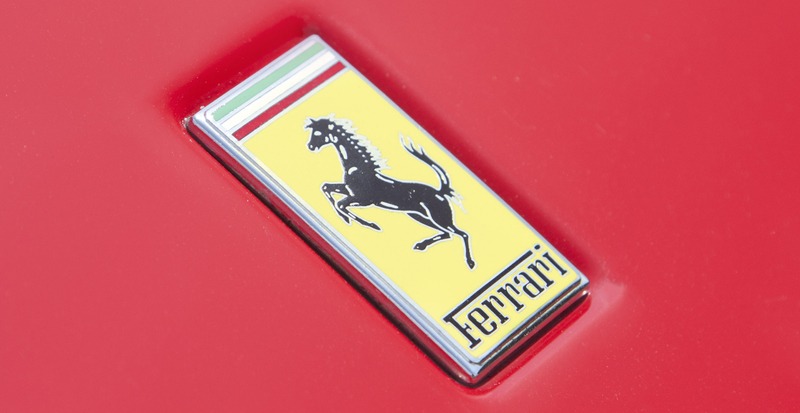
Ferrari logo
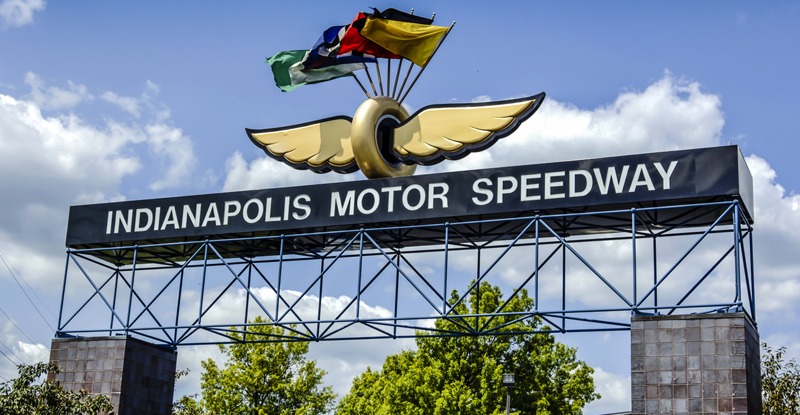
Indianapolis Motor Speedway
The race was won by Boulton, although it is believed that the carriage was driven by his son, James Boulton. In the official records, the drivers’ names were not given, and it is speculated that the drivers’ names were omitted for them to hide their “crime” from the red-flag law, as it was illegal to drive cars at dangerous speeds. As for the location of the race, it was indicated that it happened over a route that connects Ashton-under-Lyne and Old Trafford, which was eight miles in length.
Early Races
The first organized race for automobiles was conducted on April 28, 1887, by Monsieur Fossier, the chief editor of a publication in Paris called “Le Vélocipède.” The race was done on a 2-kilometer road and was won by Georges Bouton, a French toymaker and engineer that collaborated with French pioneer Jules-Albert de Dion to create the De Dion-Bouton automobile company and develop a fast steam-powered car for the race. Unfortunately, only De Dion and Bouton’s car competed in the same race, but because it completed the 2-kilometer course, the car was still declared the winner. [2]
In 1891, another automobile race occurred when Louis Rigoulot and August Doriot (engineers for Peugeot) drove the gasoline-fueled Type 3 Quadricycle during a bicycle race at Paris-Brest-Paris (PBP), which was a long-distance cycling event that started in the same year and was originally a 1,200 km race that goes from Paris to Brest, and back to Paris. Doriot and Rigoulot’s quadricycle did not win the race, as the winning cyclist, Charles Terront, was already in Paris when the automobile reached Brest. Although it did not win, the quadricycle proved to many audience members, monitors, and marshalls that an automobile takes less effort to use than a bicycle since Doriot and Rigoulot didn’t exert too much effort to drive it compared to Charles Terront/
Paris-Rouen Race
The first competitive motor race was Paris-Rouen, also known as the “Le Petit Journal Horseless Carriages Contest,” which occurred in 1894 on the road from Paris to Rouen, a city on the River Seine in the northern region of France. [3] The race was organized by Le Petit Journal, a French newspaper company, to stir interest in French motor manufacturing and promote their own publications.
Pierre Giffard, the then-editor of Le Petit Journal, organized the event to further develop the newspaper’s popularity and motoring in France. Because sporting events were effective publicity stunts during that period, there was no hesitation between the owners and editors of the newspaper to create a motor race. Le Petit Journal promoted the race as competition for cars that are “not dangerous,” “easy to drive,” and “cheap during the journey.” The “easy to drive” rule meant that the drivers of the cars should not be accompanied by a mechanic or assistant (often called a “stoker”). The total prize pool for the said race was 10,000 gold in France, with 5,000 given to the first place winner, 2,000 for second place, 1,500 for third, 1,000 for fourth, and 500 for fifth place.
There were 102 people that participated in the race, some working for well-known manufacturers like Panhard, Peugeot, and De Dion-Bouton, and a few were supposedly made by engineers with ambitious concepts. Out of the 102 participants, 78 did not appear for the qualifying race. About 25 of those that did not appear in the qualifying round were registered to be powered by improbable technologies during that period, such as compressed air, electricity, gravity, and hydraulics. The rest that did not show up were powered by petro or steam, but they still did not enter the race either due to time constraints in building their vehicles or not having enough funds to develop a working automobile. At the qualifying race, 22 cars were qualified to enter the official race.
The first driver to finish the race was Jules-Albert de Dion, using a steam-powered car. However, because he needed an assistant or stoker to run the vehicle, he was qualified to get the main prize of the race. The second placer was Albert Lemaitre, who was driving a petrol-powered automobile called the Peugeot Type 7. Lemaitre would later be considered the first petrol-powered finisher in an official motor race. The third-place winner was Auguste Doriot, who drove another Peugeot-made automobile that was powered by petrol. The fourth placer was Hippolyte Panhard, who used a petrol-powered automobile by Panhard et Levassor. The fifth place in the race was shared by Émile Levassor of Panhard et Levassor and Emile Kraeutler of Peugeot.
Paris-Bordeaux-Paris Race
The Paris-Bordeaux-Paris Race that occurred on June 11, 1895, is often regarded by historians as the first official motor race despite the existence of the Paris-Rouen race in 1894. While the Paris Rouen race was organized as a contest and a publicity stunt for Le Petit Journal, the Paris-Bordeaux-Paris Race was organized to see the capabilities of automobiles during that period. In addition, the winner of the Paris-Rouen race was judged for being the first to reach the finish line, while the Paris-Bordeaux-Paris race’s winner was judged for being the fastest to get to the finish line which is more similar to the modern rules of auto racing.
The first-place winner of the Paris-Bordeaux-Paris race was Émile Levassor of Panhard et Levassor, the fifth-placer in the Paris-Rouen race. However, because only four-seater cars were eligible for winning prizes at the race, Levassor didn’t receive the grand prize since he was driving a two-seater automobile. [4] The same situation also applied to the second placer, Louis Rigoulot, as the Peugeot-made automobile he was driving was also a two-seater. The Paris-Bordeaux-Paris race was conducted on a 1,192-kilometer road, it is widely known for being one of the first races that proved that automobiles are capable of long-distance traveling.
Chicago Times-Herald Race
In the United States, the first automobile race held in the country was the Chicago Time-Herald Race, which occurred in 1895 in the city of Chicago. [5] The Chicago Times-Herald, a popular newspaper in Chicago that ran from 1854 to 1901, announced a race on July 10, 1895, where the total prize pool amounted to $5,000.
The race was supposed to increase the sales of the company’s newspapers and boost the auto industry’s growth in the country. However, automobiles in the country were only produced two years earlier, so there were not a lot of car owners during that time. In addition, the term “automobile” was not yet coined in the United States in the 1890s, so the newspaper’s editors had difficulty finding a perfect name for the race. Eventually, they decided to call the participating vehicles “Moto Cycles,” which was coined in a July 15, 1895 article.
The race organizers originally planned to run the race from the north side of Chicago to Milwaukee, but the roads in those areas were too poor for cars to drive through. So, they changed it to a course that only ran 87 kilometers from Chicago to Evanston and then back to Chicago. To make the finish line grander, the organizers also decided to place it near the Palace of Fine Arts (now the location for the Chicago Museum of Science and Industry).
The Chicago Times-Herald race was intended to start on November 2, 1895, but because only a few cars showed up, the race was rescheduled. There were about 83 cars that were registered before the day of the race, but only six participated in the actual event because most of the cars remained unfinished due to budget and time constraints. The crowd favorite that was predicted to win the race, which is the car that famous American industrialist Elwood Haynes owns, got damaged while on the way to the race, so it wasn’t able to participate.
The race rescheduling was also brought about by an incident where Elwood Haynes and another driver were stopped by the police, who told them that the automobiles should be pulled by horses since they are not allowed to be driven on city roads and streets. The Chicago Times-Herald then tried to convince the Chicago government to pass an ordinance allowing automobiles to be driven on roads. When the ordinance was finally passed, the Chicago Times-Herald scheduled the race to be held on November 28, Thanksgiving Day.
In the race, the first-place winner will receive $2,000 and a gold medal, the second place will get $1,500, the third will receive $1,000, and the fourth place will win $500. Although the race did run smoothly throughout the day, the judges only announced the winners on December 5, 1895, as they investigated several incidents where the winners and all participants had violated the rules. Because all of the drivers in the race had violations, the judges were compelled to give the prizes to the original winners since they could not find a driver that followed the rules which would have won the grand prize.
City-to-City Races
As races became increasingly popular in Europe and the United States, many races appeared left and right throughout the 1890s and the early 1900s. One of the most prominent organizers of these races is the French automobile club ACF, which usually organizes races that start or finish in Paris. However, the races in Paris and other European places were banned in 1903 after a racing incident killed nine people. The French government ultimately forced the stoppage of open-road races in Bordeaux.
On the other hand, races that started in other countries and ended in Paris continued, and one of the most popular of these races is the Peking to Paris race that occurred in 1907. The Peking to Paris race started in the city of Peking (now called Beijing) in China, ended in Paris, France, and had a distance of 14,994 kilometers. [6]
The race was organized to prove that automobiles are fast and durable enough to travel from one country to another. There were 40 entrants to the race, but only five participants appeared on the day of the event, as they were the only ones willing to ship their cars to Peking at the starting line. The winner of the race was a 7-liter engine car driven by Prince Scipione Borghese, an Italian aristocrat, and industrialist that belonged to the House of Borghese, a noble family in Italy. Borghese was also accompanied by racing driver Ettore Guizzardi. The Peking to Paris race would have five re-enactments in 1990, 1997, 2005, 2007, and 2013.
The longest race in automobile history was the New York to Paris Race in 1908, which started in Times Square in New York and ended in Paris, France. The participants would have to haul their automobiles in steamers or ships to get from coast to coast in a few countries that racers passed through. The winner of the race was the American team that drove an automobile made by Thomas Flyer in 1907.
Racing Circuits
Before the longest city-to-city races were organized, Australia already had the Aspendale Racecourse. The Aspendale Racecourse served as the first purpose-built motor racing circuit. Although it was only in 1906 when the owner of the track, James Robert Crooke, added a motor racing circuit, the Aspendale Racecourse has existed since 1891 as a horse racing track. Crooke named the racecourse after one of his best horses, Aspen, who won the famous Newmarket Handicap two times, particularly in 1880 and 1881. The Aspendale Racecourse closed in 1939, and its location currently serves as an area for residential housing.
The first motor racing circuit in England was Brooklands, which opened in 1907 in Surrey. Besides being a racing circuit, Brooklands is also one of the country’s first airfields and is the location for the factory that made the Wellington, VC-10, and Viscount aircraft. The racing circuit in Brooklands closed in 1939 so that the entire area could be utilized to hasten the production of planes that would be used for World War II. Because of the damage done to the track during the said period, the racing circuit was never opened again. Brooklands is currently the location for the Brooklands Museum, which showcases several planes, vintage vehicles, and interesting facts about the racing circuit.
The oldest race track that is still operating since 2021 is the Milwaukee Mile, which was opened in 1903 at the Wisconsin State Fair Park in the United States. The Milwaukee Miles was originally a dirt track that was built for horse races and rare motor races, but it was eventually paved in 1954 to serve as a purpose-built motor racing track. [7] Throughout the years, the Milwaukee Mile has hosted several major events or series in the auto racing industry, such as Indy Lights, the NASCAR Gander Outdoors Truck Series, the USAC Stock Car division, and the ARCA Midwest Tour.
One of the most popular automobile racing circuits in the United States is the Indianapolis Motor Speedway, the home of the Indianapolis 500 annual race and other prestigious races with participants from around the world. The Indianapolis Motor Speedway opened in 1909 and, as of 2021, is maintained by the Penske Entertainment Group, which bought the speedway in 2019 from Hulman & Company, who had been running the circuit since the 1940s.
Major Manufacturers in Auto Racing
Since street racing is considered illegal in all countries today, the only legal way for aspiring drivers to test their skills is to enter sanctioned races like Formula 1 and NASCAR. Many manufacturers produce vehicles specifically made for these types of sanctioned races, and most of these manufacturers also make cars that can be used for public roads. In fact, most of their sports cars made for regular roads are inspired by race cars used on the tracks. Here is a list of major manufacturers in auto racing.
Ferrari
When it comes to racing, one particular brand comes into most people’s minds immediately. This brand is Ferrari, which was founded in 1939 strictly to create racing cars. The founder of the company, Enzo Ferrari, began his deep fascination with automobile racing when he was recruited to become a race car driver for the renowned Alfa Romeo Company. [8]
However, Ferrari left Alfa Romeo in 1938 to form his first company, Auto Avio Costruzioni, in 1940. In the said company, he built the 815, which was used at the 1940 Brescia Grand Prix, although two model units did not finish due to problems with their engine. While auto racing was put on hold throughout the duration of World War II, Ferrari began conceptualizing models that his company could produce after the war. In 1947, Ferrari changed the company’s name from Auto Avio Costruzioni to simply “Ferrari.” The first model that featured the famous Ferrari badge was the 1947 125 S.
Enzo Ferrari’s passion and dedication for the cars he designed or approved is still alive within the company even after his passing in 1988. As of 2021, Ferrari holds the record for the most wins in Formula 1 at 238. The second placer in the rankings, McLaren, only has 183 wins.
Chevrolet
While Ferrari is often hailed as the king of Formula 1, Chevrolet has the same moniker in the world of NASCAR. Chevrolet was founded in 1911 and was originally created to manufacture road cars with race car qualities and features.
It was only in 1955 when Chevrolet officially entered the auto racing scene and joined NASCAR. [9] In just two years, it has already overtaken Chrysler and Ford as the top manufacturer in NASCAR, and most of their wins throughout the late 1950s were attributed to the 150 “Black Widow,” a race-ready version of the original 150 that features a black-and-white color scheme.
In 2021, Chevrolet remains a dominant force in NASCAR, as it has already amassed 71 total NASCAR Cup wins, making it the manufacturer with the most wins in the said race. The second placer in the rankings, Ford, only has 23 wins, which is less than half of Chevrolet’s total wins.
Ford
Speaking of Ford, the said company is also a very popular manufacturer within the NASCAR scene, as some of its models are driven by a few of the best race car drivers in the world. The Ford Motor Company, also called Ford, was founded in 1903 and is famous for manufacturing the Ford Model T, the first affordable automobile in the world.
Because Ford made automobiles more accessible, it could be said that the company is considered one of the most important figures in automobile history. Without it, automobiles may remain an expensive commodity that many people cannot afford today.
The Ford Motor Company started joining NASCAR races in the 1950s, and they continue to be a prominent race car manufacturer up to today’s era. The first victory of Ford in NASCAR occurred on June 25, 1950, when Ford driver Jimmy Florian won at the Dayton Speedway, beating future NASCAR Hall of Gamers Curtis Turner and Lee Petty. [10]
McLaren
Another renowned manufacturer in the Formula 1 scene is McLaren, which has the second oldest Formula 1 racing team after Ferrari. McLaren Automotive is a British automobile company that was founded in 1962 by Bruce McLaren, a famous race car designer and driver based in New Zealand. Around the same year, McLaren also founded McLaren Racing Limited, a British motor racing team that competed in Formula 1 races.
Unfortunately, Bruce McLaren died in 1970 due to a car crash that occurred while he was testing his company’s new model, the McLaren M8D. Although he passed away at such a young age, the McLaren racing team and automobile company continued to exist and carried on his dedication to designing and producing the best race cars in the world.
To further improve the company’s race cars, McLaren formed a partnership with Mercedes-Benz, supplying McLaren with high-quality engines. The partnership lasted until 2014; by the next year, McLaren had formed a new partnership with Honda. As of 2021, McLaren is second place in the most wins in Formula 1 by a manufacturer with 183 wins.
Different Types of Auto Racing
There are different types of auto racing that are differentiated by the cars used for the races. To get a gist of what these types of auto racing are, here is a table that will explain the most important details you need to know about each type.
| Type | Description |
| Formula Racing | The cars that are competing in Formula racing are single-seater and open-wheel vehicles that are much lighter and faster than the cars used on the road. The driver or team’s partner manufacturer custom-designed and built these single-seater cars. |
| Stock Car Racing | The cars in stock car racing are production vehicles that may look like regular cars from their exterior but have customized engines and internal parts. Stock cars used for racing would usually have decals of their sponsors or partners on the exterior. |
| Tour Car Racing | A type of car racing that bears similarities with stock car racing but is less customized internally. Tour cars are also used for endurance races where vehicles would have to remain running for long periods of time. |
| Drag Racing | While most types of races are held on tracks, drag racing is typically organized on a straight road. Almost all drag races are done on regular roads. |
| Rally Racing | Rally racing is a sub-type of stock car racing, but instead of driving on a track, rally drivers would have to drive their cars on closed public roads and off-road locations. |
| Production Car Racing | The type of racing where the only cars that are allowed to compete are pure production cars without any modifications done to them. |
| Off-Road Racing | An auto racing type that is done or conducted purely in off-road areas. Most cars used in this type of race are four-wheel drive vehicles with all-terrain tires. |
| Monster Truck Racing | A type of auto racing that involves big trucks with massive wheels that allow them to go over hills and ramps. |
Formula 1
Formula 1 is deemed the highest class of automobile racing for single-seater racing cars. The cars used in Formula 1 are very different from the ones you will see on the road, as they have only one seat, are much smaller, and are open-wheeled (with wheels outside the car’s main body).
Formula 1 racing is organized on a much smaller track than NASCAR, so the races are faster and shorter. The Formula 1 race was first inaugurated in 1950, and since then, it has remained one of the most popular forms of auto racing in the world. Below are lists of manufacturers and drivers with the most wins in Formula 1. [11]
Manufacturers with the Most Wins in Formula 1
Drivers with the Most Grand Prix Wins
NASCAR
The renowned National Association for Stock Car Auto Racing, better known by its abbreviation “NASCAR,” is an American auto racing operating and sanctioning company founded in 1948 by Bill France Sr., a businessman with a passion for driving race cars and organizing races. NASCAR sanctions more than 1,500 races in the United States, as well as in Mexico, Canada, and a few countries in Europe.
Unlike in Formula 1, where the automobiles are specifically designed to move much faster and lighter, NASCAR vehicles use production-model cars, often called “stock cars,” that are highly modified to have better engines and parts. Below are lists of manufacturers and drivers with the most wins in NASCAR. [12]
Manufacturers with the Most Wins in NASCAR
Drivers with the Most Wins in NASCAR
24 Hours of Le Mans
The challenging 24 Hours of Le Mans is an endurance race for sports cars that started in 1923 and is still being held or organized yearly near the town of Le Mans, France. Unlike many other races, the winner of the 24 Hours of Le Mans is the car that drives the greatest distance near Le Mans in 24 hours. Most drivers that compete in this race cannot finish it, as they would have to drive their cars for one whole day without experiencing mechanical failure.
The Automobile Club de l’Ouest is the organizer of the event that sets up the Circuit de la Sarthe, a track consisting of closed public roads and sections that the Le Mans cars would drive or pass through. The Le Mans is one of the three legs or “crowns” of the Triple Crown of Motorsport, an unofficial motorsport achievement that is won by the driver that wins first place in the 24 Hours of Le Mans race, the Indianapolis 500, and the Monaco Grand Prix. Here are the lists of manufacturers and drivers with the most wins in the 24 Hours of Le Mans. [13] [14]
Manufacturers with the Most Wins in the 24 Hours of Le Mans
Drivers with the Most Wins in the 24 Hours of Le Mans
Indianapolis 500
The Indianapolis 500, also known simply as the Indy 500, is an annual automobile race that is held at the Indianapolis Motor Speedway (IMS), one of the oldest racing circuits in the world. This amazing race has been organized since 1911 and continues to be a great venue for the best drivers in different parts of the world to compete and see who is the best of the best each year.
Because of how many renowned drivers join the Indianapolis 500, the race is considered by many racing enthusiasts as “The Greatest Spectacle in Racing.” In addition, its prestigious stature in the auto racing industry allowed it to become one of the three legs of the “Triple Crown of Motorsport.” Here are the lists of manufacturers and drivers with the most wins in the Indianapolis 500. [15] [16]
Car Manufacturers with the Most Wins in the Indianapolis 500
Engine Manufacturers with the Most Wins in the Indianapolis 500
Drivers with the Most Wins in the Indianapolis 500
Monaco Grand Prix
The Monaco Grand Prix is deemed by many as one of the most prestigious races in the Formula 1 class. This race is held annually on the Circuit de Monaco, a street circuit that is intertwined with the city streets of La Condamine and Monte Carlo.
Regarded as one leg of the “Triple Crown of Motorsport,” the Monaco Grand Prix is often praised for its location, as Monaco is also a very popular tourist spot. In addition, this race also features one of the most challenging tracks for Formula 1, as the Circuit de Monaco has elevated and narrow roads. Below are the lists of manufacturers and drivers with the most wins in the Monaco Grand Prix. [17]
Manufacturers with the Most Wins in the Monaco Grand Prix
Drivers with the Most Wins in the Monaco Grand Prix
Total Formula 1 TV Viewership from 2008 to 2020
Besides being an audience member in the stadiums and tracks where races are held, many racing fans would also watch their favorite races and drivers through the television screen. Because races can be watched on free TV or on cable, which are technically much cheaper than regular stadium tickets, there are a lot more viewers on those platforms compared to the ones that are actually seeing the races near the track.
As shown in the data presented above, the amount of viewership for Formula 1 has decreased significantly over the years, with the lowest occurring in 2013 when only 352 million people were tuning in to Formula 1 races. [18] However, in 2018, the number went up drastically to 490 million; up to 2020, the viewership never went below 400 million. It is predicted that the viewership for Formula 1 will remain stable at more than 400 million viewers as the races are becoming more exciting and unpredictable.
Total NASCAR Daytona 500 TV Viewership from 2001 to 2021
Since the Daytona 500 is the first race in NASCAR, it is no surprise that it would usually have more viewers than any other race organized by the company, as it is where people can have fun with who they think will win the most races in NASCAR since the first race is a great gauge to see which drivers are clearly better than the others.
Throughout the 2010s, the Daytona 500 viewership was lower and lower as people slowly lost interest in the race. [19] Because of the delays that occurred in 2020 and 2021, it was already expected that the number of viewers would drop to an all-time low. Compared to Formula One, which is regaining its viewers step-by-step, the Daytona 500 struggles to keep viewers. However, analysts predict that the Daytona 500 will return to its glory as NASCAR is doing its best to make races and shows more exciting.
Total Indianapolis 500 TV Viewership from 2001 to 2020
Much like the Daytona 500, the number of viewers for the Indianapolis 500 keeps decreasing, although it is still one of the most watched sports on TV during the month when the racing event is held. [20] Its popularity among racing enthusiasts is also attributed to its rich history since it is one of the oldest racing events in the United States.
Because the Indianapolis 500 usually takes place in May, it would constantly compete with other sports starting their playoffs or broadcasting popular teams. In 2020, when the said race was rescheduled to start in August, it was the first time that an NBA Playoffs game overlapped with the Indianapolis 500, resulting in fewer viewers for the latter, as people are more tuned in to watching the best NBA teams competing to see who will reach the finals. Once the schedule of major sports that got delayed in 2020 and 2021 returns to normal, it is expected that the Indianapolis 500 will regain its viewers.
20 Interesting Facts about Auto Racing
- A pit stop for Formula 1 racing is often less than three seconds long. The pit stop crew is trained to change tires and fix other car problems with speed and accuracy, which is similar to what Formula 1 drivers do on the tracks.
- Because of how fast Formula 1 cars move, the exhaust of those vehicles can reach more than 1,000 degrees Celsius. So, it can easily melt aluminum since that metal has a melting point of 660 degrees.
- To avoid the melting of the parts in Formula 1 cars, expensive and exotic materials with a high melting point need to be installed so that the vehicles won’t experience major problems during the race.
- Due to the expensiveness of Formula 1 car parts, the best teams in the class would spend more than $500 million a year to have a higher chance of winning.
- Most of the parts that are found in road cars today are derived from innovative race car parts from the past, like the rearview mirror or a powerful engine.
- Formula 1 race cars are not the only ones that are lightweight and speedy on the track, as F1 drivers tend to lose some fats while driving multiple races. The weight loss is due to the high temperature inside the cockpit, so they sweat a lot and burn plenty of calories.
- Formula 1 drivers also need to be fit to withstand the massive G-Force they will experience while driving ridiculously fast cars.
- An engine for Formula 1 cars can only last for up to five races before it needs to be replaced.
- A NASCAR vehicle can reach 150 to 200 miles per hour in speed.
- The three most popular NASCAR series are the Xfinity Series, the Sprint Cup Series, and the Camping World Truck Series.
- The most popular race in NASCAR is Daytona 500, the first race held every year for NASCAR.
- NASCAR drivers should be 200 pounds in weight when they are wearing their uniforms. If they are less than 200 pounds, weights would have to be added to their clothing.
- Richard Petty is regarded as the most popular NASCAR driver. He is responsible for popularizing stock car racing around the world.
- Richard Petty also invented the window net, an accessory that can help protect the driver’s arms in a crash or accident.
- The driver that won the first race for NASCAR, which is also the first Daytona 500, is Lee Petty, the father of Richard Petty. The race was held on February 22, 1959.
- Richard Petty, Jimmie Johnson, and Dale Earnhardt share the same record of winning seven championships in NASCAR.
- Jimmie Johnson won five consecutive championships from 2006 to 2010.
- The Martinsville Speedway is regarded as the shortest track in the Cup Series at 0.8 kilometers.
- The Road America in Wisconsin is considered the longest NASCAR track at 6.5 kilometers.
- As of 2021, the number of tracks that are part of the NASCAR Cup Series is 26.
References
[1] Grace’s Guide to British Industrial History. Isaac Watt Boulton. GracesGuide.co.uk. Available at: https://www.gracesguide.co.uk/Isaac_Watt_Boulton [Accessed on October 28, 2021]
[2] Nick, D. 1884 De Dion, Bouton et Trepardou Dos-a-Dos. SuperCars.net. Available at: https://www.supercars.net/blog/1884-de-dion-bouton-et-trepardou-dos-dos/ [Accessed on October 28, 2021]
[3] Nye, D., 2019. The 1894 Paris-Rouen Trial, the very first competitive motorsport event. Goodwood.com. Available at: https://www.goodwood.com/grr/race/historic/2019/6/the-1894-paris-rouen-trial-the-race-that-wasnt-a-race/ [Accessed October 28, 2021]
[4] Mercedes-Benz Public Archive. Paris – Bordeaux – Paris race (1192 km). Mercedes-Benz-PublicArchive.com. Available at: https://mercedes-benz-publicarchive.com/marsClassic/en/instance/ko/Paris—Bordeaux—Paris-race-1192-km.xhtml?oid=7398 [Accessed October 28, 2021]
[5] The Chicago-Times Herald, 1895. The Chicago Times-Herald Motor Race. ScientificAmerican.com. Available at: https://www.scientificamerican.com/article/the-chicago-times-herald-motor-race/ [Accessed October 28, 2021]
[6] Endurance Rally Association. Peking to Paris 1907. EnduroRally.com. Available at: https://www.endurorally.com/peking-to-paris-1907/ [Accessed October 28, 2021]
[7] Wisconsin State Fair Park, 2021. Milwaukee Mile Speedway. WIStateFair.com. Available at: https://wistatefair.com/wsfp/milwaukee-mile-speedway/ [Accessed October 29, 2021]
[8] Montréal Grand Prix, 2018. The Top Manufacturers of Formula 1 Cars. MontrealGrandPrix.com. Available at: https://montrealgrandprix.com/news/top-manufacturers-formula-1-cars/ [Accessed October 29, 2021]
[9] Harbid, T., 2020. Spotlight: The History of Chevy Cars in Nascar. CashCarsBuyer.com. Available at: https://www.cashcarsbuyer.com/the-history-of-chevy-cars-in-nascar/ [Accessed October 29, 2021]
[10] NASCAR Staff Report, 2020. Ford scores 700th Cup Series win with Harvick’s Dover victory. NASCAR.com. Available at: https://www.nascar.com/news-media/2020/08/23/ford-scores-700th-cup-series-win-with-harvicks-dover-victory/ [Accessed October 29, 2021]
[11] Formula 1, 2021. Formula 1 Constructor Standings. Formula1.com. Available at: https://www.formula1.com/en/results.html/2021/team.html [Accessed October 29. 2021]
[12] Jayski’s, 2021. NASCAR Cup Manufacturer Stats & Records. Jayski.com. Available at: https://www.jayski.com/cup-manufacturers-stats/ [Accessed October 29, 2021]
[13] PledgeSports, 2019. The Most Successful Car Manufacturers at Le Mans Over the Years. PledgeSports.com. Available at: https://www.pledgesports.org/2019/12/the-most-successful-car-manufacturers-at-le-mans-over-the-years/ [Accessed October 29, 2021]
[14] Leslie, J., 2016. The 8 Most Successful Le Mans Racing Drivers Ever. CarThrottle.com. Available at: https://www.carthrottle.com/post/here-are-the-most-successful-le-mans-racers-ever/ [Accessed October 29, 2021]
[15] McCants, P., 2016. Honda’s won more Indy 500 races than any other engine manufacturer. TorqueNews.com. Available at: https://www.torquenews.com/1574/honda-s-won-more-indy-500-races-any-other-engine-manufacturer-1 [Accessed October 29, 2021]
[16] Haislop, T., 2021. Indy 500 winners: A complete list of all-time race champions, records, most wins. SportingNews.com. Available at: https://www.sportingnews.com/us/athletics/news/indy-500-winners-list-records-most-wins/qbfg113aik2v1nt487z36h3un [Accessed October 29, 2021]
[17] James, N., 2014. Monaco Grand Prix Winners: Ranking Formula 1’s Top 10 Drivers in Monte Carlo. BleacherReport.com. Available at: https://bleacherreport.com/articles/2067555-monaco-grand-prix-winners-ranking-formula-1s-top-10-drivers-in-monte-carlo [Accessed October 29, 2021]
[18] Farrell, C., 2020. Formula 1: Speeding towards esports success? Digital.HBS.edu. Available at: https://digital.hbs.edu/platform-digit/submission/formula-1-speeding-towards-esports-success/ [Accessed November 15, 2021]
[19] Paulsen, 2020. New record-low for delayed Daytona 500. SportsMediaWatch.com. Available at: https://www.sportsmediawatch.com/2021/02/daytona-500-ratings-record-low-rain-fox/ [Accessed November 15, 2021]
[20] Paulsen, 2020. Moved to August, Indy 500 hits record-low. SportsMediaWatch.com. Available at: https://www.sportsmediawatch.com/2020/08/indy-500-ratings-record-low-august-nbc/ [Accessed November 15, 2021]


